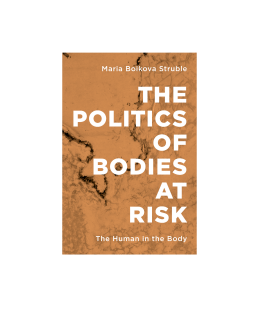
Additional Information
Book Details
Abstract
An understanding of International Relations exclusively as a sphere plagued by countless known and unknown risks, looming disasters and imminent threats leaves an important aspect of the study of politics unengaged – that of the human herself.
The Politics of Bodies at Risk re-engages and re-conceptualizes politics from the point of view of the everyday experiences of human materiality living with risk across geopolitical worlds and state borders. Re-imagining human bodies as productive, singular and embodied materiality removes them from an understanding of “life” in an age of terror as pejorative, dispensable, and burdensome, enabling a novel understanding of politics as an embodiment of human bodies with risk, and not as a sphere of activity aimed primarily at managing, silencing, and normalizing the risky other.
Drawing on case studies from several countries and across several disciplines, The Politics of Bodies at Risk investigates the possibility of developing an understanding of the productive possibilities contained in engaging with the human body as a site of a radical interconnectedness between politics, singularity, risk, and security.
The Politics of Bodies at Risk is an academic tour de force. Informed by a broad range of contemporary scholarship, this book shines a critical light on one of the most urgent and often ignored issues of our times: the disposability of human beings. Struble’s study never lets us forget the lives that are truly at the center of all we study and write about.
Roxanne Lynn Doty, associate professor, Department of Political Science, Arizona State University
Maria Struble is an Associate Professor of Politics and Government at Western State Colorado University.
Table of Contents
| Section Title | Page | Action | Price |
|---|---|---|---|
| Contents | 9 | ||
| Acknowledgments | 11 | ||
| 1 Risk and the Exception | 15 | ||
| 2 The Spectre That Haunts | 35 | ||
| 3 Trafficking and the Single Story | 51 | ||
| 4 Recovery, Pathology, and Poetic Witness | 77 | ||
| 5 Waiting for the State | 113 | ||
| 6 The Child’s Dead Body as “War Body” | 145 | ||
| Conclusion | 175 | ||
| Bibliography | 181 | ||
| Index | 193 | ||
| About the Author | 197 |
